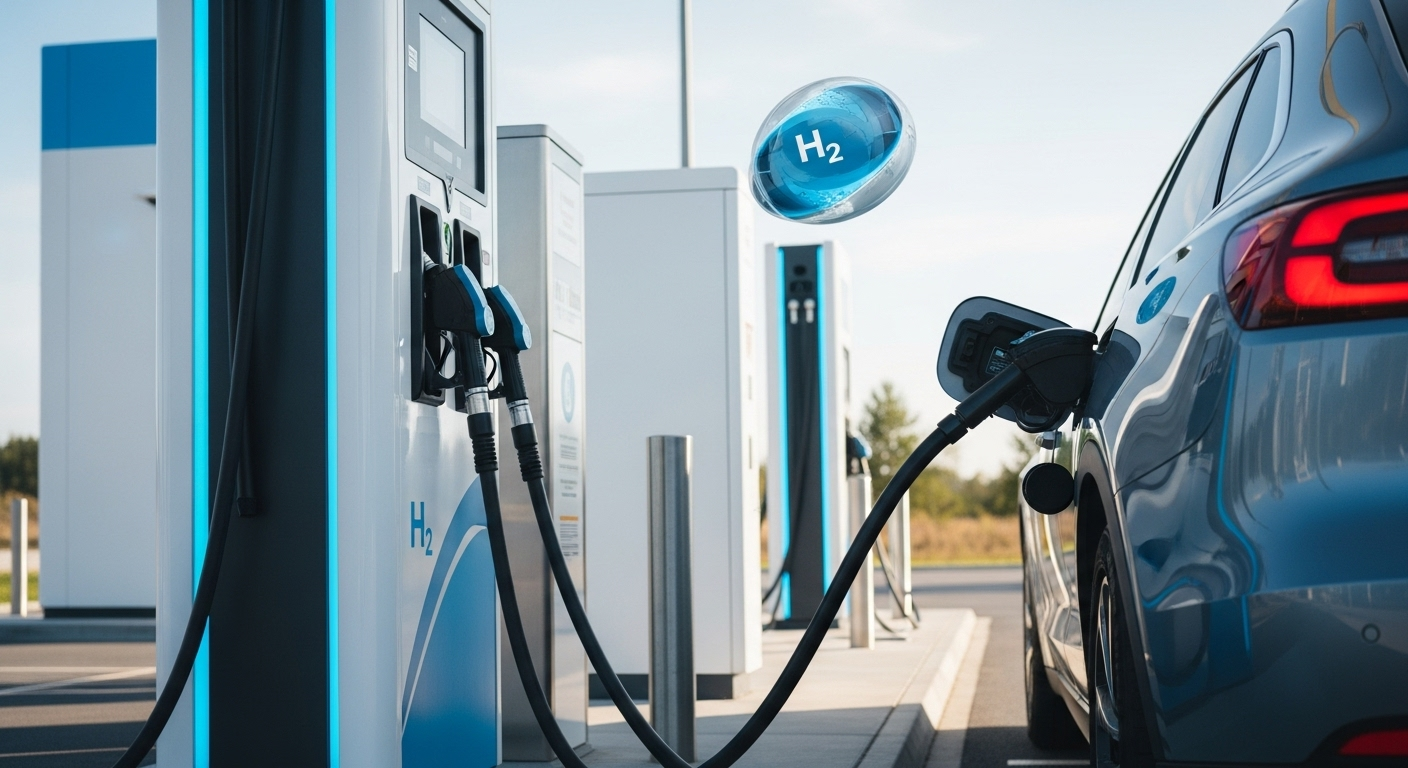Pioneering the Future: Hydrogen Fuel Cell Vehicles
With fossil fuels running out and global warming on the rise, the search for alternative energy sources in the automotive industry is more crucial than ever. Enter Hydrogen Fuel Cell Vehicles (HFCVs), a promising technology that might just pave the way for a greener future.

Introduction
Imagine cruising down the highway in a vehicle that only emits water vapor. Sounds like science fiction, right? Not anymore. This is a reality with Hydrogen Fuel Cell Vehicles (HFCVs). These are not your everyday vehicles; they represent a significant shift in how we think about cars and energy. But what are they, how do they work, and what’s their potential impact on the automotive industry and our planet?
A New Era of Sustainable Mobility
HFCVs are powered by hydrogen fuel cells. Instead of burning gasoline like traditional internal combustion engines, these vehicles generate electricity through a chemical reaction between hydrogen and oxygen in the fuel cell. This process emits nothing but water vapor, making HFCVs a beacon of hope for a sustainable and pollution-free future.
Fuel cells were first invented in the 1800s, but they remained a scientific curiosity until the mid-20th century when NASA started using them in space programs. Today, they’re a key player in the race to develop sustainable transportation, with major automobile companies like Toyota, Honda, and Hyundai already introducing HFCVs into the market.
Navigating the HFCV Landscape
The adoption of HFCVs is still in its early stages, but it’s gathering momentum. The global market for hydrogen fuel cell vehicles was estimated at around $651 million in 2018, and it’s projected to reach $42 billion by 2026.
While these numbers are promising, HFCVs face several challenges. One of the major ones is infrastructure. Hydrogen refueling stations are rare, and building them is costly. Plus, producing, storing, and transporting hydrogen is complex and energy-intensive. However, as the technology improves and economies of scale kick in, these challenges will likely become less daunting.
The Impact and Potential of HFCVs
Despite these hurdles, the potential benefits of HFCVs are immense. First, they offer a cleaner alternative to conventional vehicles, helping to reduce greenhouse gas emissions and air pollution. Second, they’re highly efficient. Fuel cells convert energy directly into electricity, bypassing the inefficiencies of combustion.
Moreover, HFCVs could help to diversify our energy sources and increase energy security. Unlike oil, hydrogen can be produced from a variety of sources, including renewable energy. And finally, the rise of HFCVs could stimulate economic growth and job creation, particularly in sectors related to hydrogen production and fuel cell manufacturing.
Driving into the Future
Hydrogen Fuel Cell Vehicles are not a panacea for all our environmental woes, but they’re a significant step in the right direction. The journey to widespread adoption will be challenging, but with continued research, technological advancements, and supportive policies, HFCVs could play a crucial role in our transition to a more sustainable and resilient transportation system.
As we speed towards the future, the automotive landscape is shifting under our wheels. And as we navigate this new terrain, one thing is clear: the road ahead is paved with opportunities for innovation, growth, and a greener world. So buckle up, because the ride is just getting started.



